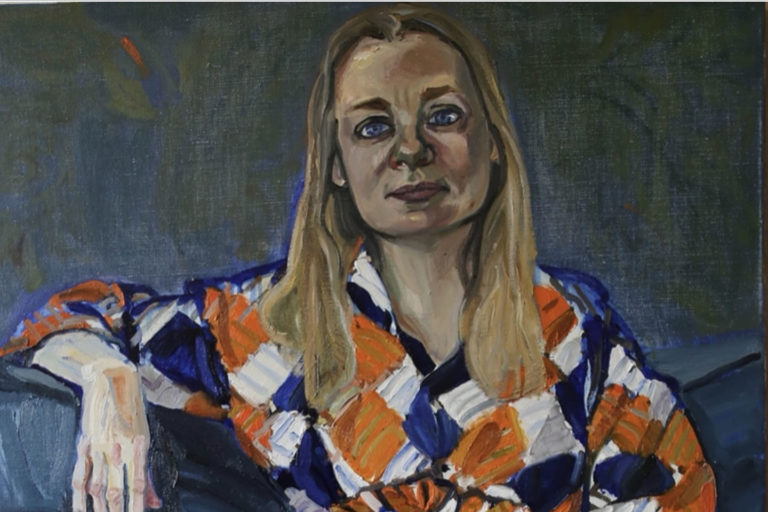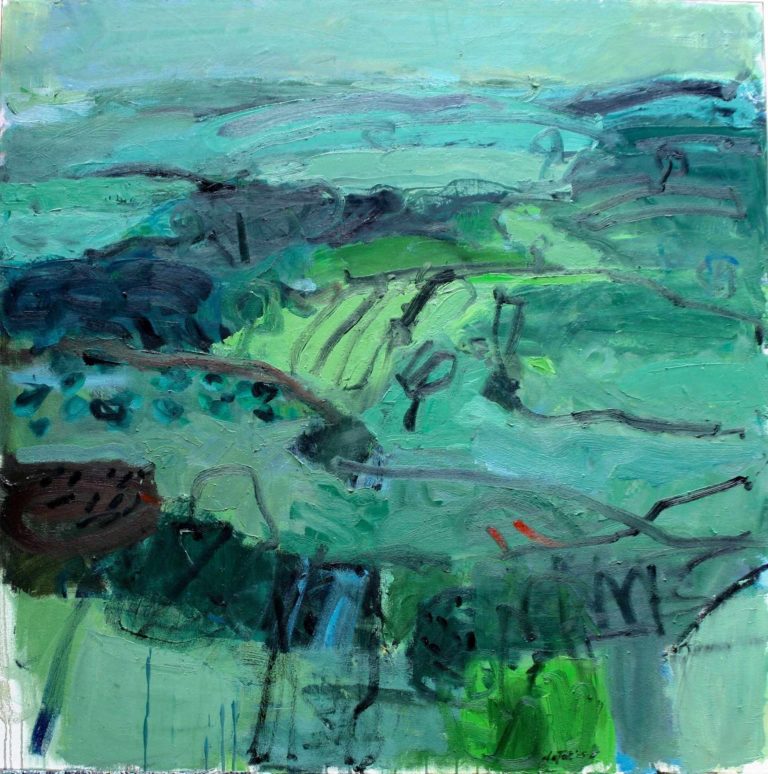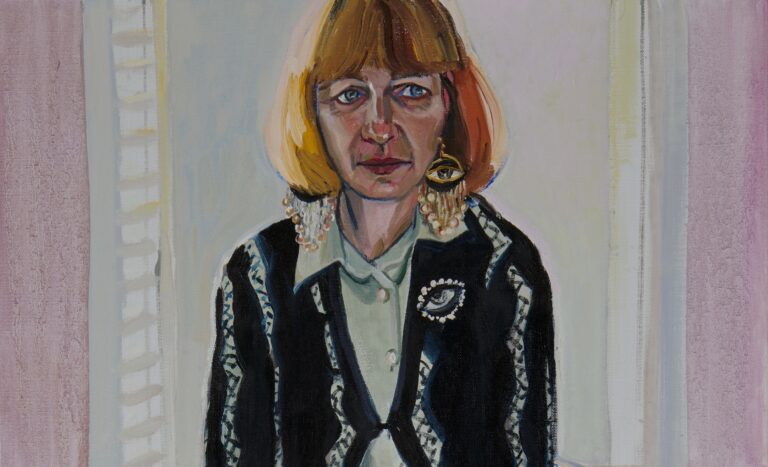Often the most profound experiences in an artist’s life are also the most difficult to represent artistically. It is only with the passage of time and a change in perspective that they can be clearly grasped. Such has been my relationship to motherhood.
During the years when I was raising my children, I engaged very little with motherhood in my artistic practice. It was later, when my own daughters became mothers, that the subject came to be central to my work. I have often puzzled over this turn of events; why did I only discover in motherhood such a rich fount of inspiration when I was already once removed, as it were, from the experience? The question throws a revealing light not just on my own circumstances as an artist, but perhaps on motherhood more generally. It is one of the tragedies of being a mother that it cannot be properly appreciated, or even properly reflected upon, in the first person and in real time.
The most basic, incontrovertible reality of being a mother is that it takes an immense amount of time and energy. How can an artist confront the problem of how to represent an experience when the experience itself denies her the opportunity to make much work at all? And how to represent an experience like motherhood is an overwhelming problem, since it seems to redefine the artist’s existence at every level. Even if I had found the time, I struggle to imagine how I could have reached any sort of detached perspective on what it meant to be a mother. I could hardly process what I was going through on an emotional or contemplative level, let alone express it.
In my case, the result was a profound dualism between myself as artist – a woman with ambitions and a highly defined sense of personhood – and myself as mother. As a consequence of this dualism, the only way I as an artist could grasp the reality of motherhood was in terms of conflict and resentment. Looking back at the work I did make in those years, I found just two examples representing my experience as a mother. In both, I portrayed myself being strangled by the umbilical chord attaching me to my children. This strikes me as more than just a cry of frustration at being suffocated by my responsibilities. It suggests that I could not reconcile the two roles I was trying to occupy in my life. Art and motherhood belonged to different spheres of existence, different worlds, which could not accept one another.

No doubt part of the explanation for this lies in the Afrikaans culture of the 1960s and 70s in which I was raised. Here the prospect of having a twofold identity as a woman – mother and artist – as yet barely existed. There were some young women in my generation who were boldly pursuing this revolutionary course, but it didn’t seem like an option for me. Just as being an artist was viewed as an appropriately feminine occupation (unlike my brothers, I was never considered for a profession like medicine or law), so it was assumed that I would abandon art when it came time to fulfil my proper role as mother and care-giver.
Of course that is not exactly how it turned out; during the 1980s I found myself in Boston, Massachusetts, struggling to find time for an MFA at the same time as I was raising three children. Nonetheless, even if I did not accept art and motherhood as being mutually exclusive, on some level I had internalised that distinction. Ultimately, the mutual alienation of the two roles in my life was held in place by some combination of inherited social perspectives, personal circumstances and conceptions, and the sheer divergence between the concrete demands of being a mother and those of being a productive artist. As a result, my experience as a mother was somehow both all-consuming and invisible, a shadow that covered my work but was not recognised in it.
Nothing better demonstrates the extent of this inner conflict than the fact that I did not even properly recognise it until much later. Only in the last decade, through the process of painting my daughters and their children, have I been able to properly understand my experience of motherhood.
Over the course of my career – and especially after moving to the United Kingdom, a profound and disorientating rupture in my life – I have increasingly taken as my subjects things that are familiar to me. In that sense it was natural that I would want to paint this important juncture in my daughters’ lives, which was also a juncture in my own; the eruption of a new generation into my most intimate surroundings. But I did not anticipate the degree to which it would force me to relive and reinterpret my own experiences. The social setting in which my daughters have become mothers is very different to the one in which I did: their autonomy and right to a career of their own was never questioned. Yet I immediately recognised that they were struggling with the same visceral dilemma between personal fulfilment and the desire to raise children. I felt the inner turmoil created by that dilemma all the more powerfully as I made these paintings because I was, at the same time, discovering it in my own past.
What made this (re)discovery so compelling to me as an artist, though, is that I was not just coming to terms with the tensions I had faced, but also seeing them in a more universal light. The personal conflicts faced by mothers are not merely personal, and nor are they just an experience common to many mothers. They are emblematic of a more profound pathos that belongs to motherhood: a pathos which derives its power from cycles of life and death, sacrifice and renewal.
My portraits of my daughters during pregnancy and in the demanding years of their children’s infancy are, for the most part, very intimate scenes, with a strong undercurrent of exhaustion and melancholy. Those emotions and that physical trauma are so characteristic of being a mother – and so vivid to an artist who has experienced them herself – that it felt natural to bring them to the fore in artworks which seek to represent motherhood honestly. But I also found a deeper resonance in the exhausted body as the symbol of motherhood. These bodies represent an existential conflict: the sacrifice of a woman’s independent potential for the profound, beautiful and yet shattering purpose of bring new life into the world; life that will, in turn, have to face the demands of the world upon its own potential.
Of course the tragic irony which underlies this representation is that my subjects, being immersed in the immediate demands of motherhood, are no more able to achieve this perspective on their experience than I was. And in some sense, the insight they have given me as an artist has made me a beneficiary of their sacrifice.
In portraying motherhood from my half-detached perspective, then, I was unexpectedly confronted with a visceral recollection of my personal experience of it, and at the same time, came to recognise that experience as universal. For me as for so many others, having children was a decision I made freely but could never quite reconcile myself with. I certainly don’t regret it, but being a mother and being an artist are two very different realities, which I found to be in constant tension with one another. For many years this led to a profound dualism in my life, and now I can see another generation of mothers facing the same situation.




